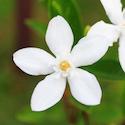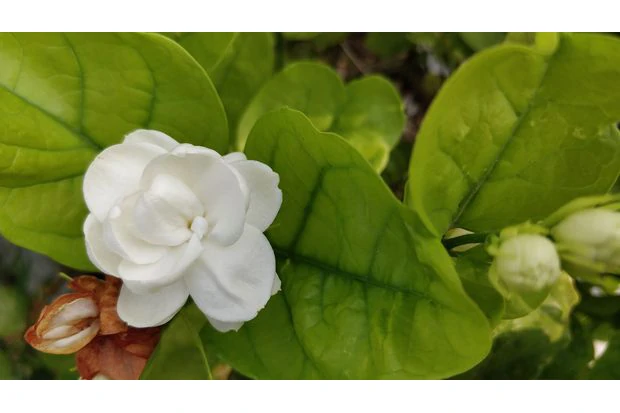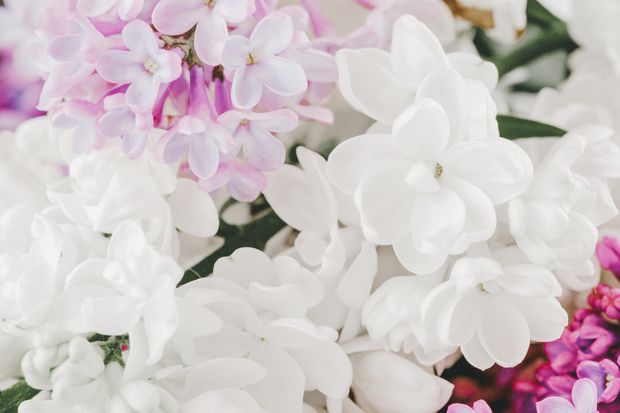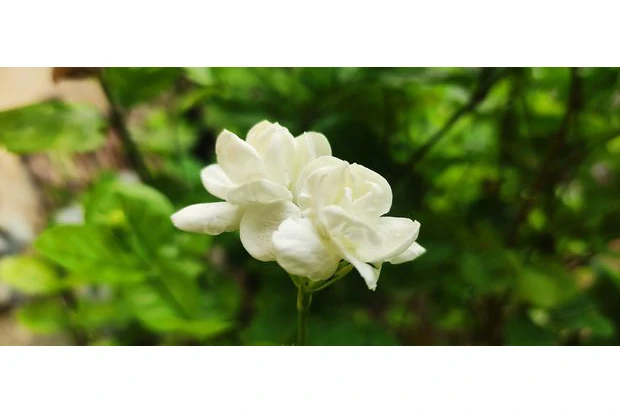Jasminum sambac, most commonly known as Arabian or Sambac jasmine, is a captivating and exotic plant native to Southeast Asia. It belongs to the family of Oleaceae. This visually attractive plant can grow rapidly either as a vine or as a shrub and it is not only characterized by the gorgeous waxy and silky flowers but also by the scent and fragrance produced in its amazing flowers. It is the national plant in the Philippines and it is one of the three national flowers in Indonesia. How amazing is this!
The tropical Arabian jasmine plant thrives in warm temperatures. They grow the best in the geographical plant hardiness zones 9 to 11. And even outside of these zones, Sambac jasmine plants are easy to grow and keep alive so long they have enough bright light and not too cold temperatures, especially if we want to have a fully blossomed plant.
The main general water requirement of the Arabian jasmine is to keep the soils moist and it usually requires to be watered once or twice a week (no more than that, otherwise you might promote the root to rot). More sophisticated techniques are required, if the ambient climate is too hot.
The bottom line is, the Arabian jasmine plants love tropically high humidity!
How do I revive a dried up Arabian jasmine plant?
But what do we do, if our plants were under watered for their needs for a while and are now drying up? Can we revive them? How?
- We need to figure out, how far the plant is gone. Scrutinize the plant and identify which stems are still visibly alive. Some of them might look brown and dry. You can grab a little cutter or knife and make an small incision to inspect the layer of plant stem tissue underneath the bark. Or you might get away with using your fingernails to scratch away a strip of bark at a height of about an inch above the soil to reveal what lies beneath. If you find some white or green tissue, it means that the plant is still alive and can be saved.
- Grab a 6 inch (15 cm) pot and re-pot your Sambac jasmine by clearing up the excess of the old soil attached to the plant until you can see loose roots. Don’t panic if you don’t see white healthy roots. Sometimes when the plant is very close to not making it, the roots might look a little sad. For outdoors plant, similar tips apply. However, do not up root the plant.
- Next, prune away all the dry, yellow and brown leaves, flowers and branches. Don’t despair if you see the plant looking just like a couple of naked stems! If you have a couple of dry long stems, chop them. This is your best hope when trying to revive your plant. New plant parts will regrow at the pruned ends over time.
- Soak the roots in a glass container in water. You can leave the plant in there for up to a week. In the meantime, you can prepare the optimal manure mix in order to regenerate the almost dead Arabian jasmine plant.
- Prepare my optimal do-it-yourself (DIY) Arabian jasmine nutritious soil.
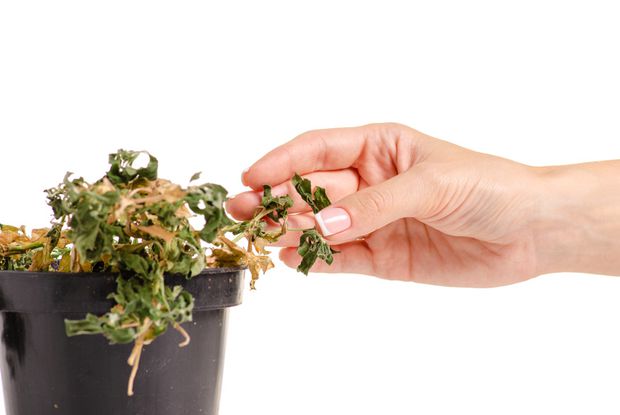
How do you prepare the optimal DIY Arabian jasmine nutritious soil?
A grown Arabian jasmine plant usually requires about 45 pounds (or 20 kg) of manure per year, divided into 4-5 feeds each as mentioned below. That much manure would contain about 4 oz (or 100 g) of nitrogen content, 8 oz (or 200 g) of phosphorus content and 8 oz (200 g) of potassium.
I had to experiment a fair bit, but finally nailed down the optimal recipe that helped me out reviving dried up Arabian jasmine plants for my friends. It goes as follows:
-
In a bucket, you are going to add 40% Cocopeat, 20% of green plant soil, 40% of cow dung, a teaspoon of Magnesium Sulphate (aka Epson salt) (about 0.17 oz or 5 g), 6 teaspoons of bone meal and 1/2 teaspoon of seaweed extract.
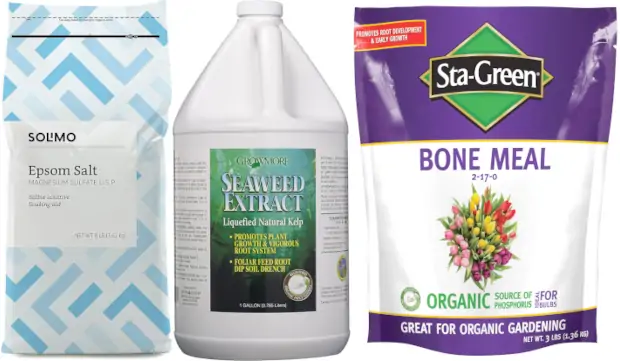
Epson salt, seaweeed extract and bone meal are some of the ingredients for my revival cocktail - If you are trying to revive an outdoors Arabian jasmine plant, then the same mixture proportions apply, just on a bigger scale. Watch out for the Bone meal amounts, as we don't want to add to much of it to alter the pH of the soil. As a ‘go to’ rule, add 10 pounds (4.5 kg) for every 100 square feet (10 square meters) of soil.
- Mix all the ingredients well and now you are ready to fill up your 6 inch pot with this mixture. Then, simply get your soaked up Sambac plant from the water container and re-pot it.
This is the recipe for success when trying to revive your Arabian jasmine plant!
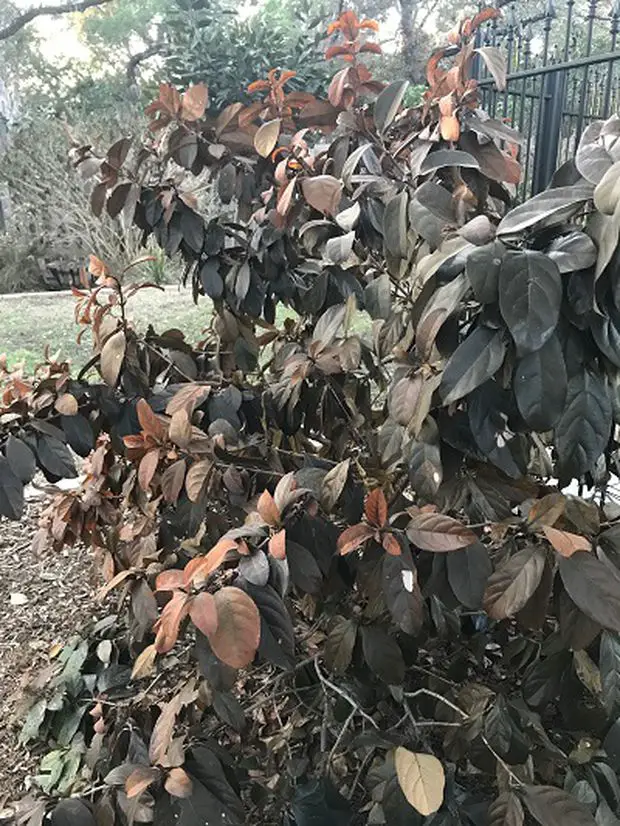
After you have re-potted your indoor plant or re-filled the soil of your outdoors plant, make sure you water it once or twice a day, ensuring the soil is moist and well packed at all times. If the soils dries out, the plant won’t push back to life! The next step is to locate the plant in an area where it can get at least 4-6 hours of direct sunlight and afterwards, move the plant to a more shaded area where the plant will be hit by indirect sunlight. Best is to place the plant in a location, where it can get 4-6 hours of direct light and then shaded daylight for the rest of the time. After two to three days of following this process, you will need to start adding some of the boosters described below to push the plant into revival mode.
After about 25 days you should start seeing some new green leaves coming out and regrowing as a first sign of success story in the revival process.
It is essential to repeat the whole process for a second time after a gap of 60 to 80 days, because we want to supply some fresh nutrients at this stage. But this time you should only remove about half the soil of your Arabian jasmine pot or outdoors plantation. Then you should refill it with the same optimal DIY mixture as described above (make about 3.5 oz or 100 g of it for a 6 inch (15cm) pot) and about 18 oz (500 g) for an outdoors plant.
After 80-90 days voila! You would have successfully revived your Sambac jasmine plant!
What are the best fertilizers to boost the revival?
The general fertilizing requirements of a Sambac jasmine plant are feeds of 4-5 times a year (or a couple of more, especially at the beginning after trying to revive a dry plant). Use a combination of both a liquid fertilizer and a slow-release granular one as this will be optimal to boost the blooming of the flowers down the track.
Here are three different types of fertilizers and do-it-yourself boosters that you can use to revive your Arabian jasmine plant:
1- Homemade compost "juice/tea":
The way we prepare this "tea" is by grabbing a bucket and filling it up with dry to semi-dry farmyard manure, then we add 4-5 times the amount of water to the pile of manure in the bucket. We stir it up until that manure is sort of dissolved and mixed with the water making a liquid mixture. Simply let it sit for about 3-4 days in a dark and semi-cool area, and don’t forget to stir it up at least once a day. After a couple of days have past, you can add 1- 2 cups of this compost "juice" to the roots of your Arabian jasmine plant. You can do this once a week for about 2 months until your plant starts coming back to life!
2- Fruit fertilizer:
Fruit peels such as orange, peaches and banana peels are not to be wasted! Collect these peels and add them to a big sangria glass jar or to a bucket and add 3/4 of the jar with water and let it set for a couple of days. Then add 1 cup of this fruit juice to the Arabian jasmine plant.
3- Grounded Coffee:
Coffee grounds are excellent fertilizers because they contain high amounts of nitrogen, potassium, and phosphorus. There is no rule to this, you could either dilute the used coffee grounds mixed in five parts of soil or farmyard compost. Then, sprinkle a bit of the mix on top of the soil and pack it well.
4- 100% Cold Pressed Neem Oil:
Neem oil is pressed from the fruits, seeds and bark of a beautiful tree called (Azadirachta indica) that grows in South Asia, India, and parts of Africa. It is packed with fatty acids, antioxidants, and antimicrobial compounds that will help grow your plant. Neem oil is applied as a foliar or leaf spray that prevents fungus, leaf diseases, spider mites and other mites both indoors and outdoors. This is going to be particularly important when trying to revive your Arabian jasmine plant as it will be quite vulnerable to a feeding attack from these pests while trying to grow back.
5- Liqui-Cop Copper Fungicide Concentrate:
This concentrate will work wonders, especially with your outdoors Sambac plant once the regrowth has kicked back, as it will help out preventing fungi infections whilst boosting the growth of the plant.
6- 2% Apple Cider soil Booster:
Prepare a 2% solution of Apple cider juice by mixing 0.7 fl. oz. (20ml) of it in 33 fl. oz. (1 liter) of water in a jar and pour a cup of it to your Arabian jasmine plant once in month as these varieties of plants usually require a little acidic soil.
Please apply all these tips and follow the above described process and with some luck and good fortunes you will be blessed with a revived plant after boosting it for 40-50 days on average.
New small green leaves will start growing back, the roots will heal back to a healthy state by shooting a new stem system and once the plant is fully recovered in the following months you might even see the charm of new flowers.
